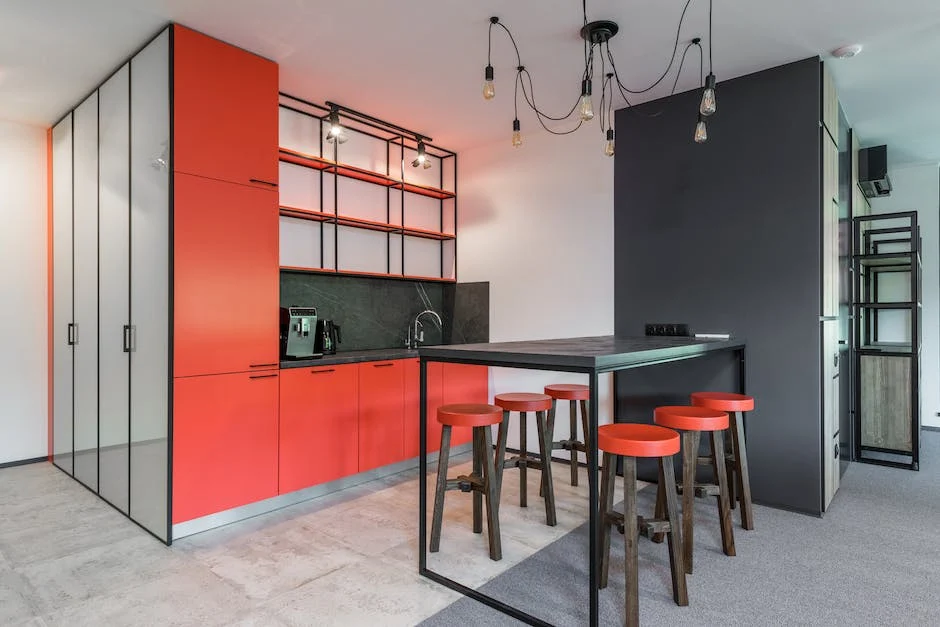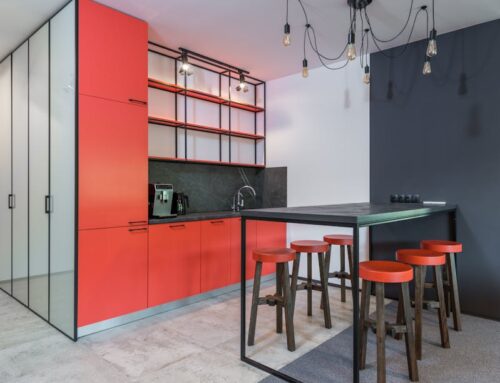Introduction to color psychology in home interiors
Understanding color psychology is essential when it comes to creating the perfect atmosphere in your home. Different colors have the power to evoke specific emotions and moods, and this knowledge can be harnessed to transform your living space. For example, warm colors like red and orange can create a cozy and inviting ambiance, perfect for a living room or dining area. On the other hand, cool colors like blue and green can promote a sense of calm and relaxation, making them ideal for bedrooms or home offices. By incorporating the principles of color psychology into your interior design, you can create a space that not only looks beautiful but also feels harmonious and supports your well-being.

Understanding the basics of color psychology
Understanding the basics of color psychology is essential when it comes to creating harmonious and impactful home interiors. Different colors have the power to evoke specific emotions and moods, and by strategically incorporating them into your design, you can create a space that reflects your desired atmosphere. For example, warm colors like red and orange can stimulate energy and passion, while cool colors like blue and green can promote calmness and relaxation. By understanding how colors influence our emotions, you can create a space that not only looks beautiful but also feels welcoming and comfortable.
The impact of warm colors on home interiors
Warm colors play a significant role in creating a welcoming and cozy atmosphere in home interiors. Colors like red, orange, and yellow are known to evoke feelings of warmth, energy, and happiness. When used strategically, warm colors can make a space feel more intimate and inviting. For instance, painting an accent wall in a warm color can instantly transform a room and create a focal point. Additionally, incorporating warm-colored accessories such as pillows, rugs, or artwork can add depth and visual interest to a space. Understanding the impact of warm colors can help homeowners create a harmonious and visually appealing environment that reflects their personality and style.
The impact of cool colors on home interiors
Cool colors, such as blues and greens, have a significant impact on home interiors. These colors are known for their calming and soothing effects, making them perfect for bedrooms and living rooms where relaxation is key. Cool colors also have the ability to visually expand a space, making it feel larger and more open. Additionally, they can create a serene and tranquil atmosphere, promoting a sense of peace and harmony in the home. Whether you choose to incorporate cool colors through paint, furniture, or accessories, understanding the impact they can have on your space is essential for creating a balanced and harmonious interior design.
The psychology of neutral colors in home interiors
Neutral colors, such as whites, grays, and beiges, play a significant role in the psychology of home interiors. While they may seem simple and unassuming, these colors have a profound impact on our mood and emotions. Neutral colors create a sense of calm and tranquility, making them perfect for bedrooms and living rooms. They also provide a blank canvas for personalization, allowing homeowners to easily incorporate pops of color through accessories and furniture. Additionally, neutral colors can make a space feel larger and more open, making them a popular choice for smaller rooms. Understanding the psychological effects of neutral colors is essential for creating a harmonious and inviting home environment.
Using color psychology to create a calming atmosphere in bedrooms
Using color psychology to create a calming atmosphere in bedrooms is a powerful tool for interior design. Colors have the ability to affect our mood and emotions, and choosing the right colors for a bedroom can greatly impact the overall ambiance. Soft, cool colors like blues and greens have been found to promote relaxation and tranquility, making them ideal choices for bedrooms. These colors can help reduce stress, lower blood pressure, and create a sense of serenity in the space. By understanding the psychological effects of color, you can create a peaceful and soothing environment that promotes restful sleep and rejuvenation.
Using color psychology to create an inviting atmosphere in living rooms
Using color psychology is a powerful tool in creating an inviting atmosphere in living rooms. The colors we choose for our home interiors can have a profound impact on our mood and emotions. For living rooms, warm and inviting colors such as shades of yellow, orange, and earthy tones can create a cozy and welcoming environment. These colors are known to evoke feelings of happiness, warmth, and relaxation. On the other hand, cool colors like blues and greens can promote a sense of calmness and tranquility. By understanding the psychology behind colors, homeowners can strategically use them to enhance the mood and ambiance of their living spaces, ultimately creating a space that feels inviting and comfortable for both residents and guests.
Using color psychology to enhance productivity in home offices
Color psychology plays a significant role in creating productive home offices. By understanding the psychological effects of different colors, you can strategically choose hues that enhance focus, concentration, and creativity. For example, shades of blue promote calmness and productivity, while green instills a sense of balance and harmony. On the other hand, yellow is known to stimulate positivity and energy, making it ideal for tasks that require enthusiasm and innovation. By incorporating these color principles into your home office design, you can create a space that not only looks aesthetically pleasing but also optimizes your productivity and overall well-being.
Tips for incorporating color psychology into home interiors
Incorporating color psychology into home interiors can have a significant impact on the overall ambiance and mood of a space. Color has the power to evoke emotions, influence behaviors, and create a sense of harmony within a room. When designing a home, it’s important to consider the psychological effects of different colors and how they can be used to achieve the desired atmosphere. For example, warm tones like red and orange can stimulate energy and passion, while cool hues like blue and green can promote calmness and relaxation. By understanding the principles of color psychology, homeowners can strategically choose colors that reflect their personal style and create spaces that are not only visually appealing but also emotionally satisfying.
Conclusion: Harnessing the power of color psychology in your home
Harnessing the power of color psychology in your home can have a profound impact on your overall well-being and mood. Colors have the ability to evoke specific emotions and create a desired atmosphere in any space. For example, warm colors like red and orange can stimulate energy and passion, while cool colors like blue and green can promote relaxation and tranquility. By understanding the psychology behind colors, you can strategically incorporate them into your home interiors to create a harmonious and inviting environment. Whether you want to create a vibrant and lively living room or a serene and peaceful bedroom, color psychology offers endless possibilities for transforming your home into a place that reflects your personality and enhances your daily life.
Check us out on Four Square!
Check us out on Submission Web Directory!



